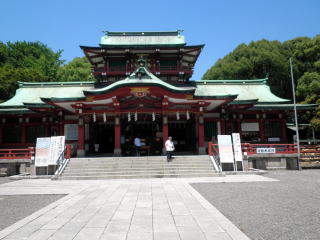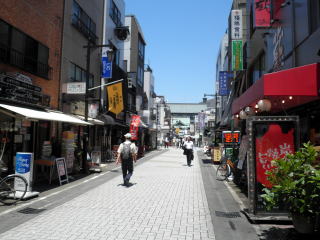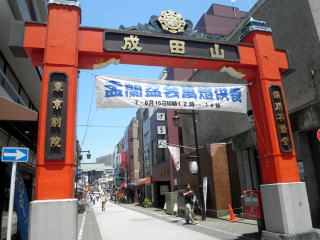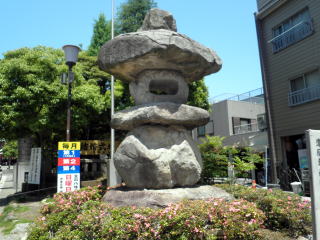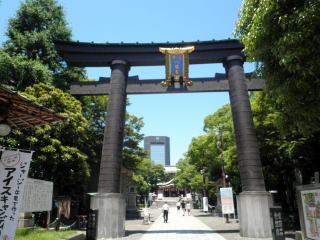We have a big temple and shrine near Monzen-Nakamachi station of TOZAI
subway line,
which connects Tokyo with CHIBA prefecture.
This area around the station was called "FUKAGAWA" in EDO period
and was one of
amusement centers as well as ASAKUSA.
At present the area is residential one keeping something traditional and
nostalgic.
These days we call this area "SHITAMACHI" which means "Down
town".
In reality its major part is reclaimed land with zero to several meters
high above sea level
and we see many channels and water courses.
These are colorful candies in plastic boxies..
2, Tomioka Hachimangu Shinto shrine
At the back of the sanctuary , we have other
monuments of stone. The biggest one
at the center is of grand champions of SUMO.
.
There is a big stone lantern at the right front
of the gate.
This shrine was constructed in 1627 on EIDAI-SHIMA isle. Afterwards the
shrine obtained
and possessed much reclamed ground around the isle.
It is dedicated to HACHIMAN-SAMA, god of war and Tokugawa shogunate supported it
financially very much during EDO period.
The approach to the temple is called
"FUKAGAWA NINJO DORI", which means
"street full of Fukagawa human warmth".
This is a statue of Mr. Tadataka INOU, who started
surveying all over Japan at his age 50 in 1800 and completed a precise
map of Japan 17 years later.
He had lived in the neighborhood.
Torii gate for Shinto shrine.
A shop of traditional Japanese sweets
and cakes along the approach.
The main gate to the temple with the name
"NARITA-SAN" above.
1, FUKAGAWA Fudoson Buddhist temple
Monuments of Sumo wrestlers
at the right side of the approach.
This is FUKAGAWA FUDO DO temple.
On the way to the temple we find a restaurant of
short-neck clams and fishes at the left corner,
This Buddhist temple is an annex of NARITA FUDO Buddhist temple, which
did the first
exhibition of Fudo-Myo-O, Acalanatha, at the present place in 1703 and
10 times more
afterwards before 1856. And the temple was finally constructed in 1881.
The sancruuary





